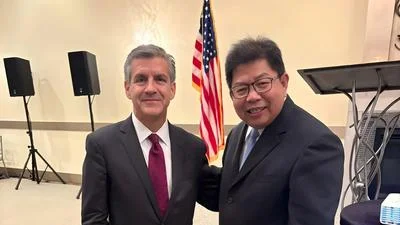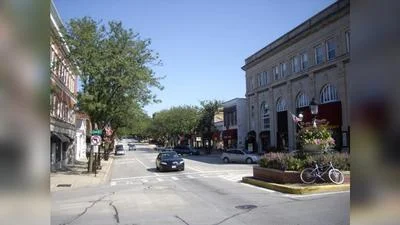State Representative Amy Grant (il) | Representative Amy L. Grant (R) 47th District
State Representative Amy Grant (il) | Representative Amy L. Grant (R) 47th District
On December 2, 1942, a monumental scientific achievement took place under the stands of an abandoned football stadium at the University of Chicago. It was the world's first controlled nuclear chain reaction. This groundbreaking experiment marked a significant milestone in the development of atomic energy and set the stage for the subsequent harnessing of this technology for military purposes.
The project, known as the Manhattan Project, was initiated by President Franklin Roosevelt in response to concerns that the German government was already pursuing the development of a devastating atomic bomb. Leading scientists, including Enrico Fermi, were recruited to work on this top-secret endeavor. Fermi, a renowned physicist who had fled Italy due to the rise of fascism, had already made significant contributions to the field of nuclear physics.
Under the leadership of Arthur Compton, the Dean of Physical Sciences at the University of Chicago, the Metallurgical Laboratory was established to consolidate the atomic research efforts. The stadium's vacant stands provided a discreet location for the physicists to conduct their experiments. It was here that Fermi's team, with the assistance of hundreds of workers, aimed to determine if it was possible to control a nuclear reaction.
After months of preparation and planning, the critical moment arrived on December 2, 1942. At 3:25 p.m., Fermi gave the go-ahead to remove the cadmium control rods. The instruments monitored the number of neutrons being ejected from the uranium atoms, and to everyone's relief, everything proceeded smoothly and exactly as expected. At 3:53 p.m., Fermi calmly declared, "That's it," concluding the experiment.
The success of this controlled nuclear chain reaction paved the way for further advancements in atomic energy. The Manhattan Project shifted its focus to the creation of larger reactors and the production of nuclear material for military purposes. Hanford, Oak Ridge, and Los Alamos became key sites in the development of the atomic bombs that would ultimately end World War II.
Although the stadium was later demolished, a domed bronze sculpture called "Nuclear Energy" now stands outside the University of Chicago's library, commemorating the historic discovery. Sculptor Henry Moore aptly reflected on the monument, saying, "Like anything that is powerful, it has a power for good and evil."
The scientists involved in the project went on to have distinguished careers in the pursuit of scientific knowledge. Fermi, in particular, became a Distinguished Professor of Physics at the University of Chicago and continued his research at the Argonne National Laboratory. His contributions to the field led to the establishment of the Enrico Fermi Institute.
Today, the legacy of the world's first controlled nuclear chain reaction lives on. The research conducted beneath the stands of a football stadium in Illinois paved the way for advancements in nuclear technology and opened up new possibilities for both peaceful and destructive applications.
To find out more, go to this link: https://repgrant.com/2023/12/01/science-under-the-stands/






 Alerts Sign-up
Alerts Sign-up